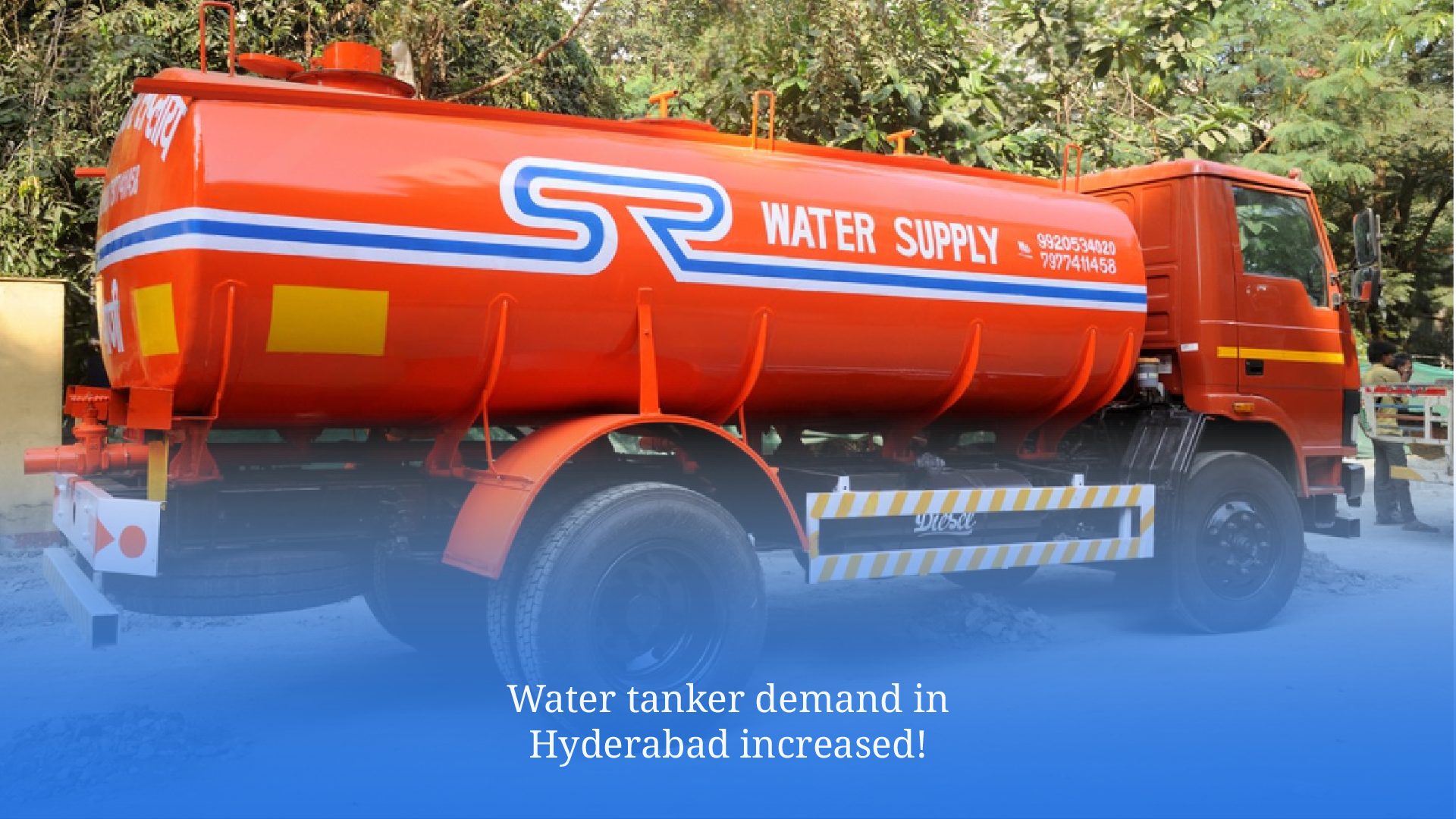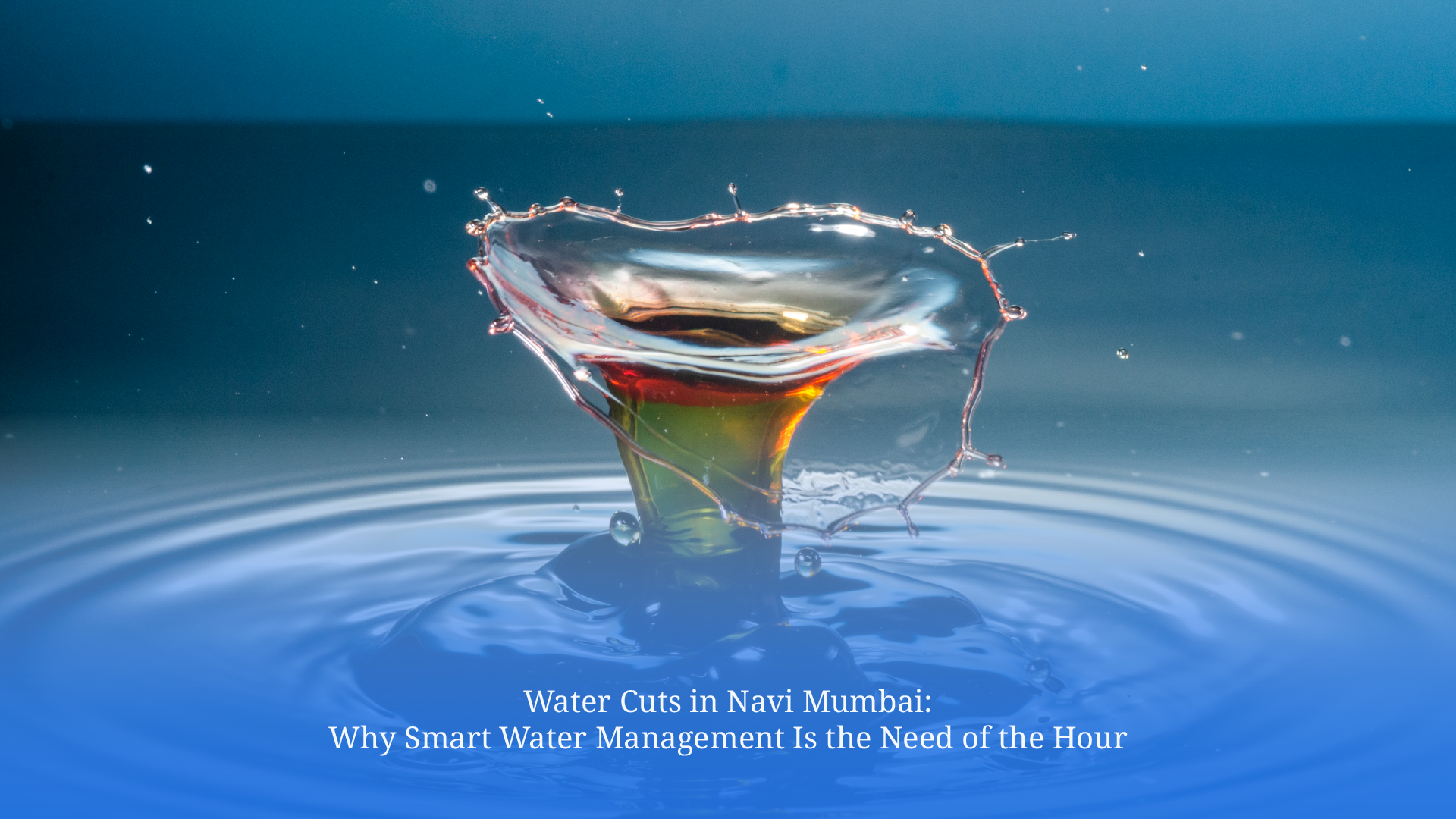Behind Hyderabad’s Water Tanker Surge: A Call for Smarter Urban Planning

Across Hyderabad’s rapidly growing neighbourhoods, a quiet emergency is unfolding. The city’s dependency on private water tankers has moved from seasonal to structural. In several localities, what was once a contingency has now become the primary water source. For housing societies, this comes with growing bills, erratic supply and fragile day-to-day management. The question is no longer when the next tanker is due. It is how long this cycle can continue before it becomes unsustainable.
The Numbers Behind the Rush
Hyderabad’s thirst for tanker water is growing sharper, faster, and costlier than before.
-
Tripling demand
Reports indicate a threefold increase in tanker demand in Hyderabad’s residential zones within just a few months. Societies that once needed a tanker once or twice a week now need several each day. This spike reflects not just water scarcity but the growing mismatch between community size and infrastructure capacity.
-
Western hot-spots
Areas such as Gachibowli, Narsingi, Puppalaguda, Kokapet and Financial District have seen the sharpest demand surges. Most of these regions are dotted with high-rises and their rapid development has outpaced municipal planning. Without consistent borewell yields or water board supply, tankers are often the only fallback.
-
Short reprieves
Temporary rainfall or a brief restoration of supply often gives housing societies a few days of relief. But these gains are fleeting. Without any structural change, the demand rebounds quickly, leading back to high reliance on tankers within days.


What’s Draining Hyderabad’s Western Corridors
Beneath the urgency lies a mix of technical inefficiencies, poor planning, and climate stressors pushing communities deeper into dependence.
-
Inefficient groundwater use
Most societies operate borewells without measuring how much water they extract or when recharge happens. Pumps often run even when the yield is negligible. This not only wastes electricity but also leads to faster motor burnout. Over time, borewells collapse from misuse, forcing complete dependency on external supply.
-
Urban-planning gaps
In several projects, especially gated communities, water planning has not kept pace with the resident population. While rainwater harvesting structures may be present on paper, they are rarely operational. There is also no pressure management between towers, leading to uneven distribution and tank overflows.
-
Climate volatility
Hyderabad has seen record-breaking summers and delayed monsoons. Longer dry spells mean higher water use, while erratic rainfall reduces natural recharge. In this climate loop, societies that are already struggling are left with fewer recovery windows and higher tanker dependency each year.
Hidden Costs of ‘Dial-a-Tanker’
What looks like a quick fix on the surface is draining societies in money, time, and sustainability.
-
Financial drain
A mid-sized society spending ₹2,000 per tanker and ordering ten tankers a day ends up spending ₹6 lakh or more per month. This cost eats into maintenance budgets and often triggers emergency fund use or resident contribution hikes. What starts as a short-term fix becomes a long-term expense spiral.
-
Operational chaos
Each tanker delivery involves coordination between vendors, security and facility teams. Parking gets blocked, entry gates see congestion and residents complain about delays or supply inconsistencies. When tanker timings clash or deliveries fail, daily routines get disrupted across the community.
-
Carbon footprint
Each tanker uses diesel and contributes to local emissions. When 10 to 20 tankers move through one locality daily, the cumulative pollution rises significantly. From an environmental perspective, tanker reliance goes against every principle of sustainable living.
Smart Water and Tanker Management: Planet Smart City’s Answer
Planet Smart City helps housing societies reduce tanker dependence by introducing a data-led, tech-driven water management system. This approach tackles the root of the problem rather than just responding to symptoms.
-
Sensor-based tank monitoring
Smart sensors are installed in both overhead and underground tanks. These sensors provide real-time water level updates to the facility team. They prevent tank overflows, reduce dry runs and enable better tanker scheduling based on actual need instead of guesswork.
-
Intelligent pump control systems
The system automates when and how long each pump should run. It avoids overuse, prevents running pumps during dry periods and extends motor life. The entire operation can be remotely monitored and adjusted through a secure digital platform.
-
Digital tanker logs and transparency
Every time a tanker is ordered or received, the system logs the details. This includes volume, cost and delivery time. Over weeks, this data helps facility managers understand usage trends, negotiate better with vendors and optimise delivery schedules.
-
Resident visibility and alerts
Through a mobile app, residents can view live tank levels, upcoming tanker schedules and even past usage. This transparency builds trust and reduces the number of complaints or queries that the facility office has to handle.
From Reactive to Resilient: Your Next Move
The water crisis in Hyderabad is not a temporary phase. It is a sign that communities need better tools, smarter planning and systems that can scale with demand. Whether your society is already dealing with tanker chaos or trying to avoid it in the future, the time to act is now.
Book a free demo with Planet Smart City to explore how sensor-driven water monitoring, smart pump automation and digital tanker logs can bring control, efficiency and peace of mind to your community. Leave behind the stress of water uncertainty and move towards a system that works with you, not against you.




